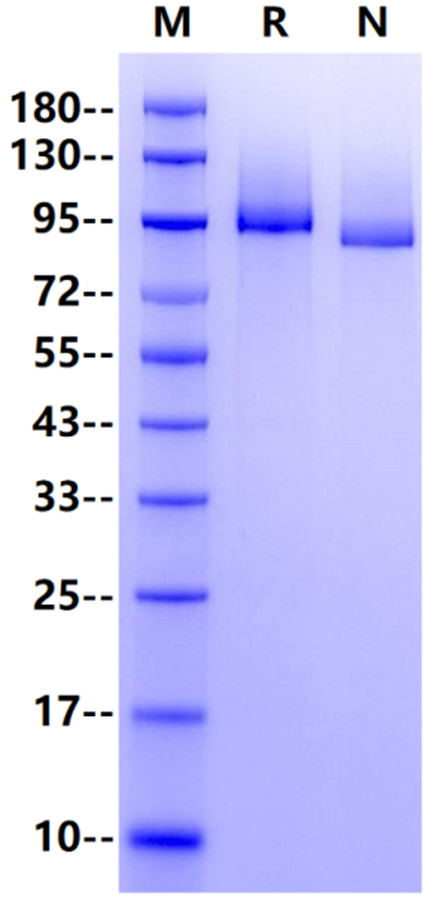Gly23-Thr785, with C-terminal 10*His GPEPSTRCELSPISASHPVQALMESFTVLSGCASRGTTGLPREVHILNLRSTDQGLGQPQREVTLHLNPIASVHTHHKPVVFLLNSPQPLVWHVKTERLAAGVPRLFLVSEGSVVQFSSGNFSLTAETEERSFPQENEHLLHWAQKEYGAVTSFTELKIARNIYIKVGEDQVFPPTCNIGKNFLSLNYLAEYLQPKAAEGCVLASQPHEKEVHIIELISPNSNPYSTFQVDIIIDIRPAREDPEVVKNLVLILKCKKSVNWVIKSFDVKGNLKVIAPDSIGFGKESERSMTVTKLVRNDIPSTQENLMKWALDNGYSPVTSYTIAPVANRFHLRLENNEEMRDEEVHTIPPELRILLGPDHLPALDSPSFQGEIPNGGFPFPFPDIPRRGWKEGEDRIPRPKEPIIPRVQLLPDHREPEEVQGGVNIALSVKCDNEKMVVAVDKDSFQTNGYSGMELTLLDPSCKAKMNGTHFVLESPLNGCGTRHRRSAPDGVVYYNSIVVQAPSPGDSSGWPDGYEDLESGDNGFPGDTDEGETAPLSRAGVVVFNCSLRQLRSPSGFQDQLDGNATFNMELYNTDLFLVPSPGVFSVAENEHVYVEVSVTKADQDLGFAIQTCFISPYSNPDRMSDYTIIENICPKDDSVKFYSSKRVHFPIPHAEVDKKRFSFVFKSVFNTSLLFLHCELTLCSRKKGSQKLPKCVTPDDACTSLDATMIWTMMQNKKTFTKPLAVVLQVDYKENVPNMKESSPVPPPPQIFHGLDTLTGGGSGGGSHHHHHHHHHH
1. Gatza CE, Holtzhausen A, Kirkbride KC, et al. Type III TGF‐β receptor enhances colon cancer cell migration and anchorage‐independent growth. Neoplasia. 2011;13:758‐770.
2. Vander Ark A., Cao J., Li X. TGF-beta receptors: In and beyond TGF-beta signaling. Cell Signal. 2018;52:112–120.
3. Wang X.F., Lin H.Y., Ng-Eaton E., Downward J., Lodish H.F., Weinberg R.A. Expression cloning and characterization of the TGF-beta type III receptor. Cell. 1991;67:797–805.
Type III receptor (TGFBR3), also known as beta-glycan, is essential and the most abundant receptor that mediates TGF-β signaling. As a high-affinity co-receptor for TGF-β, upon ligand binding, TGFBR3 facilitates ligand binding of TGFBR2, which phosphorylates and activates TGFBR1 kinase activity. Transforming growth factor beta receptor III (TGFBR3) functions as a binding co‐receptor for various cytokines of the TGF‐β superfamily and is thought to play a role in the pathogenesis of some human cancers. Some reports have suggested that TGFBR3 promotes the growth, migration, invasion and metastasis of colon cancer. In contrast, some evidences indicate that TGFBR3 contributes to reduced angiogenesis, tumour invasion and metastasis, and its expression is decreased or absent in most human cancers including breast, liver, lung, kidney, pancreas and prostate cancers.

2μg (R: reducing conditions, N: non-reducing conditions).